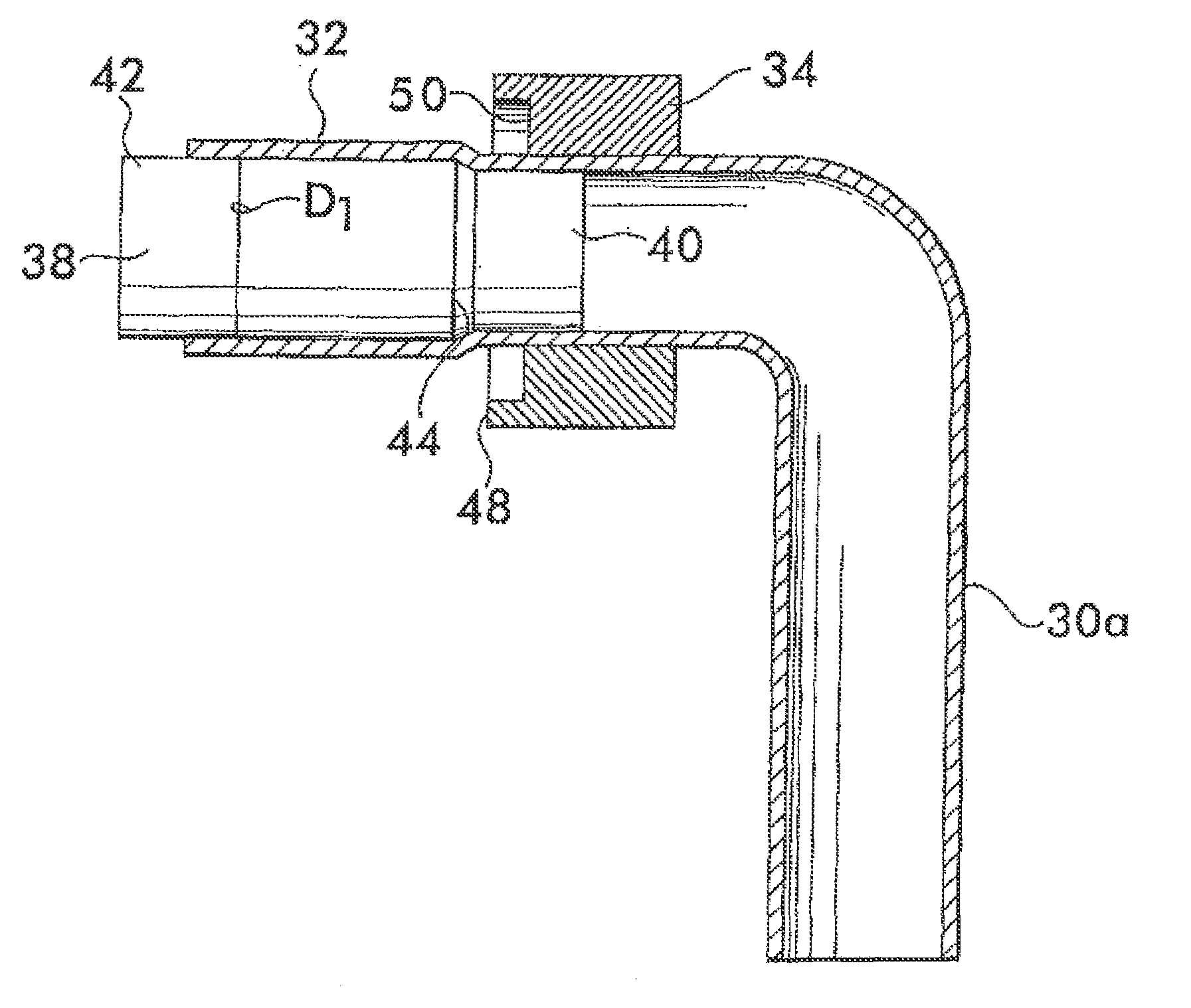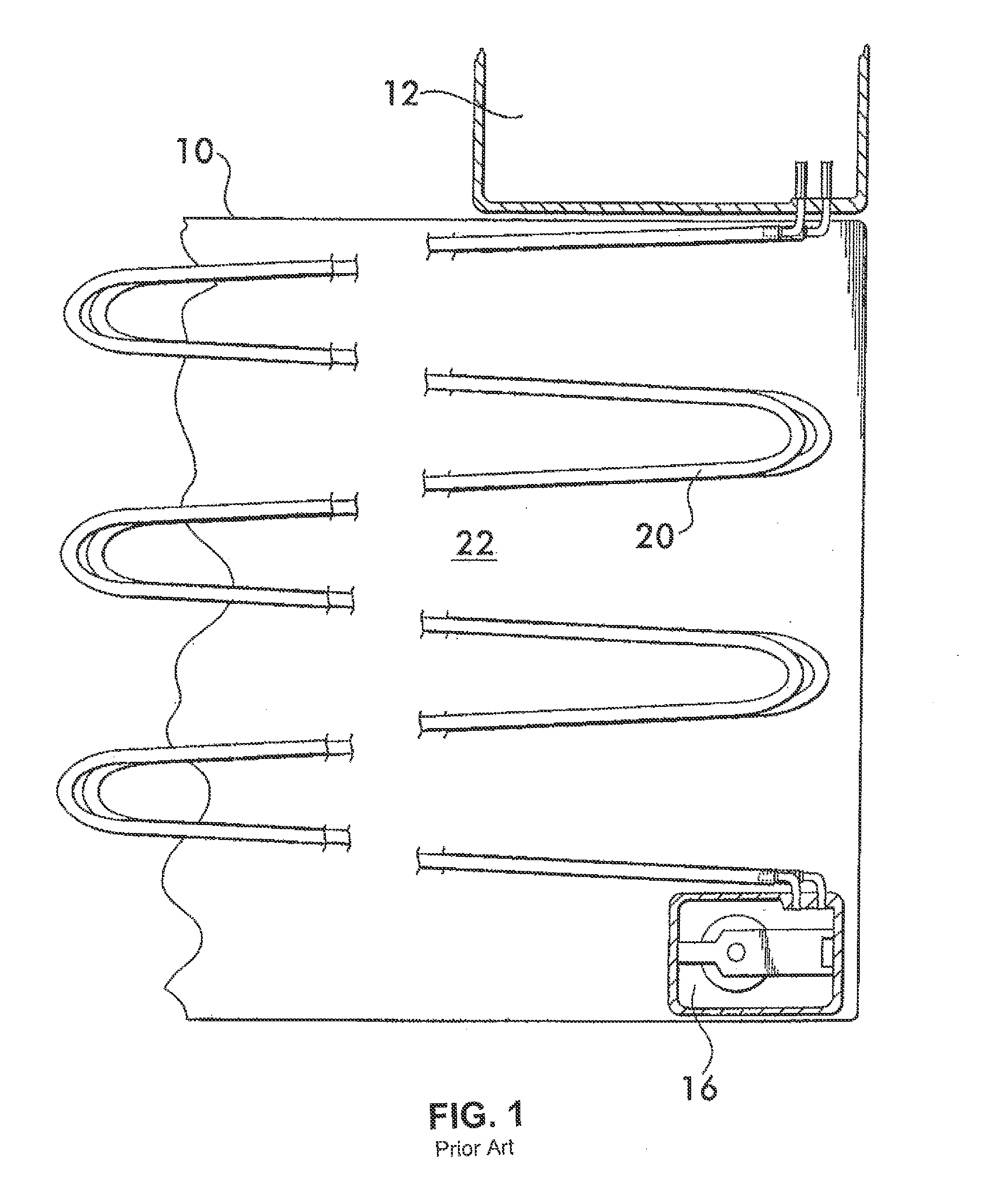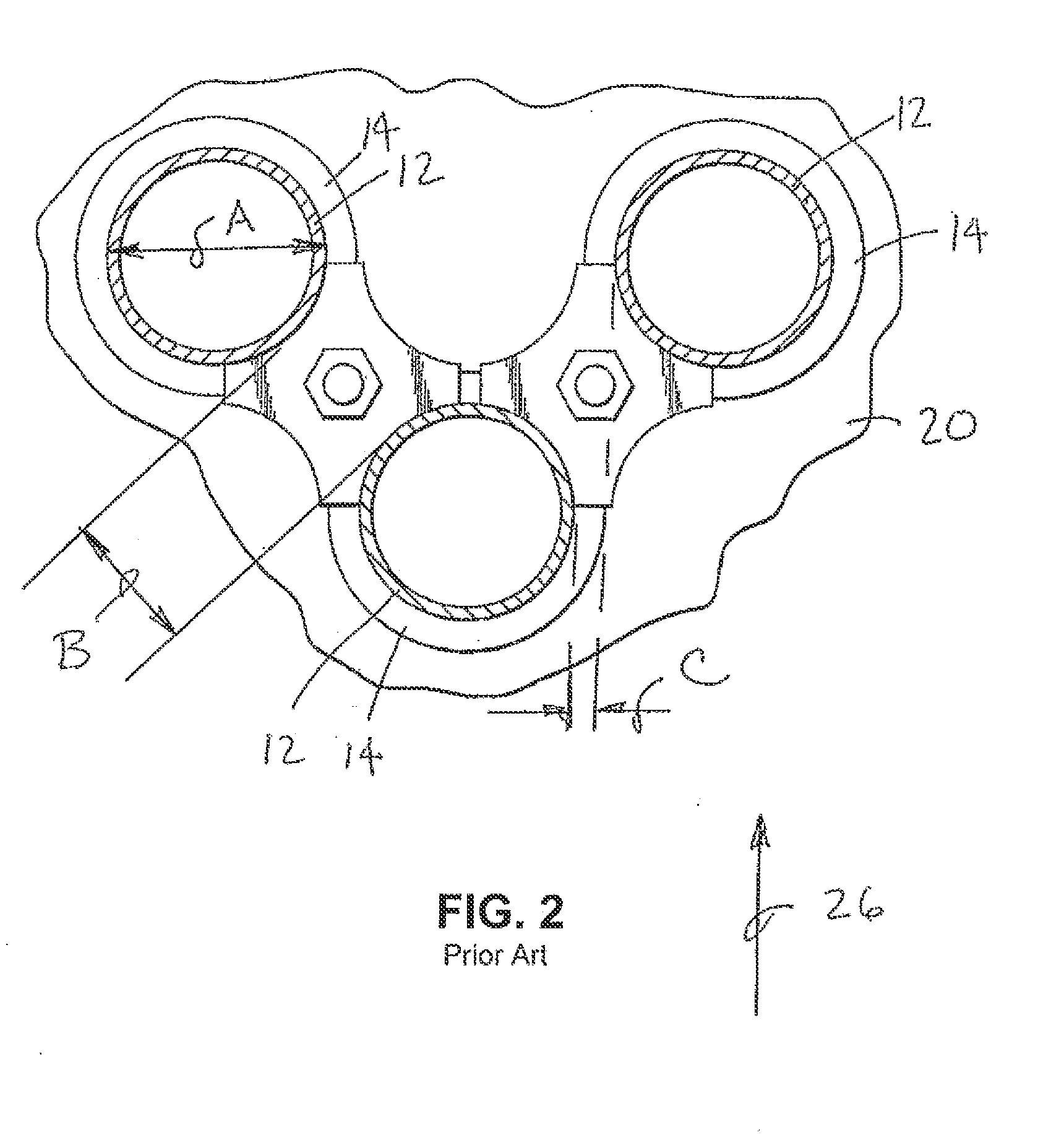Watertube and method of making and assembling same within a boiler or heat exchanger
a technology of water pipes and water pipes, which is applied in the direction of fluid heaters, indirect heat exchangers, lighting and heating apparatus, etc., can solve the problems of eliminating the fillet weld and further complicating the already difficult and inefficient process
- Summary
- Abstract
- Description
- Claims
- Application Information
AI Technical Summary
Benefits of technology
Problems solved by technology
Method used
Image
Examples
Embodiment Construction
[0039]The present invention relates to watertubes that are used in commercial boilers, heat exchangers, and like apparatus. FIG. 1 illustrates an example of a watertube boiler 10 that is known in the art. The boiler 10 includes at least one upper dome 12 and at least one base header 16. The so-called bent watertubes 20 have opposite ends interconnecting the base header 16 to the dome 12. A serpentine portion of each watertube 20 extends within a combustion chamber 22 of the boiler. System water is fed into the boiler 10 or dome 12 and travels within the watertubes 20. The water is heated in the watertubes 20 and the heated water or steam flows from the watertubes 20 into the dome 12 and then to a system supply pipe.
[0040]A typical watertube is made of a metallic material. The inner and outer diameters of such a watertube are typically constant from end-to-end. For example, the outer diameter of each tube may be 1.5 inch, and the inner diameter of each tube may be 1.25 inch thereby p...
PUM
| Property | Measurement | Unit |
|---|---|---|
| Length | aaaaa | aaaaa |
| Diameter | aaaaa | aaaaa |
| Distance | aaaaa | aaaaa |
Abstract
Description
Claims
Application Information
 Login to View More
Login to View More - R&D
- Intellectual Property
- Life Sciences
- Materials
- Tech Scout
- Unparalleled Data Quality
- Higher Quality Content
- 60% Fewer Hallucinations
Browse by: Latest US Patents, China's latest patents, Technical Efficacy Thesaurus, Application Domain, Technology Topic, Popular Technical Reports.
© 2025 PatSnap. All rights reserved.Legal|Privacy policy|Modern Slavery Act Transparency Statement|Sitemap|About US| Contact US: help@patsnap.com



